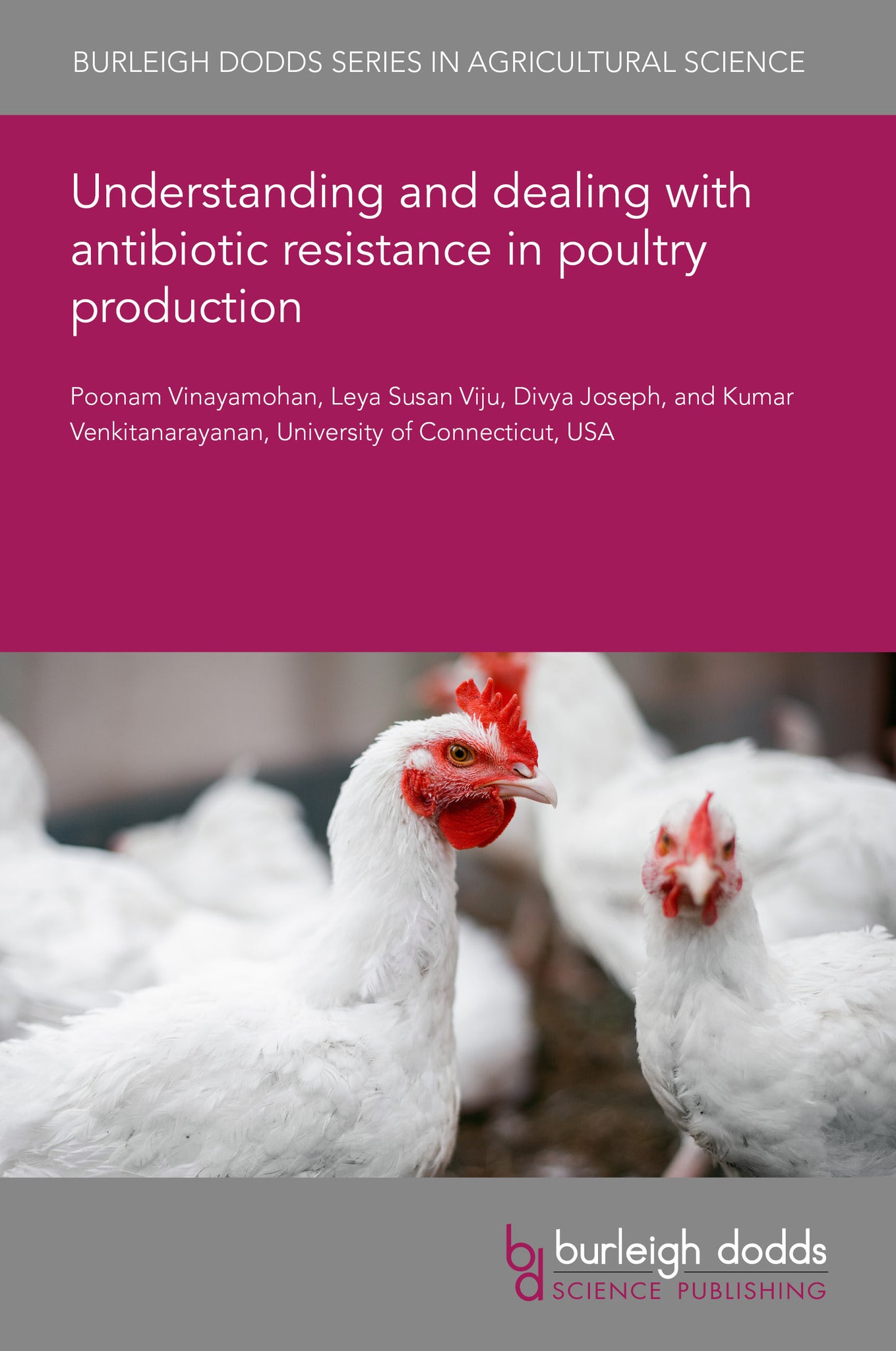We're sorry. An error has occurred
Please cancel or retry.
Understanding and dealing with antibiotic resistance in poultry production

Some error occured while loading the Quick View. Please close the Quick View and try reloading the page.
Couldn't load pickup availability
- Format:
-
09 April 2025

This chapter explores patterns of antimicrobial use (AMU) in poultry production, reviews recent modifications in AMU use and assesses their impact on trends in antimicrobial resistance (AMR). The chapter also examines examine the common antimicrobial-resistant bacteria associated with poultry and the impact of specific agricultural practices on AMR. Finally, the chapter outlines and evaluates strategies for managing and reducing AMR in poultry production.

TECHNOLOGY & ENGINEERING / Agriculture / Animal Husbandry, Poultry farming, TECHNOLOGY & ENGINEERING / Agriculture / Sustainable Agriculture, Sustainable agriculture

- 1 Introduction
- 2 Trends in antimicrobial use in poultry production
- 3 Antimicrobial resistance in particular poultryassociated bacteria: Salmonella spp. and Escherichia coli
- 4 Antimicrobial resistance in particular poultryassociated bacteria: Campylobacter spp. and Staphylococcus spp.
- 5 Antimicrobial resistance in particular poultryassociated bacteria: Clostridium perfringens and other Enterobacteriaceae
- 6 Mechanisms of action of antimicrobial resistance
- 7 Factors contributing to colonization of antimicrobialresistant bacteria in poultry
- 8 Control strategies to reduce antimicrobial resistance in poultry production: flock management practices and gastrointestinal c
- 9 Conclusion
- 10 Where to look for further information
- 11 References



